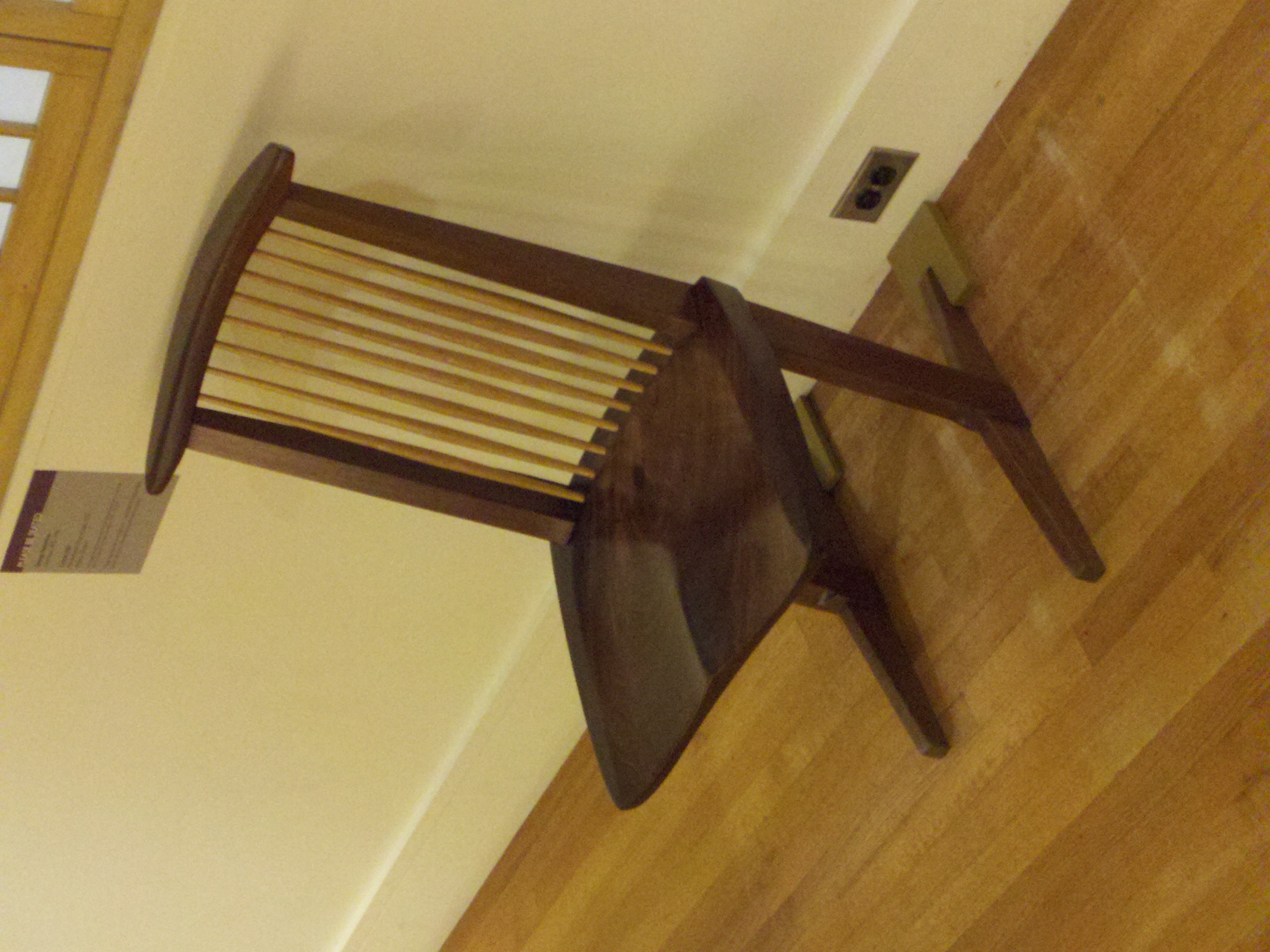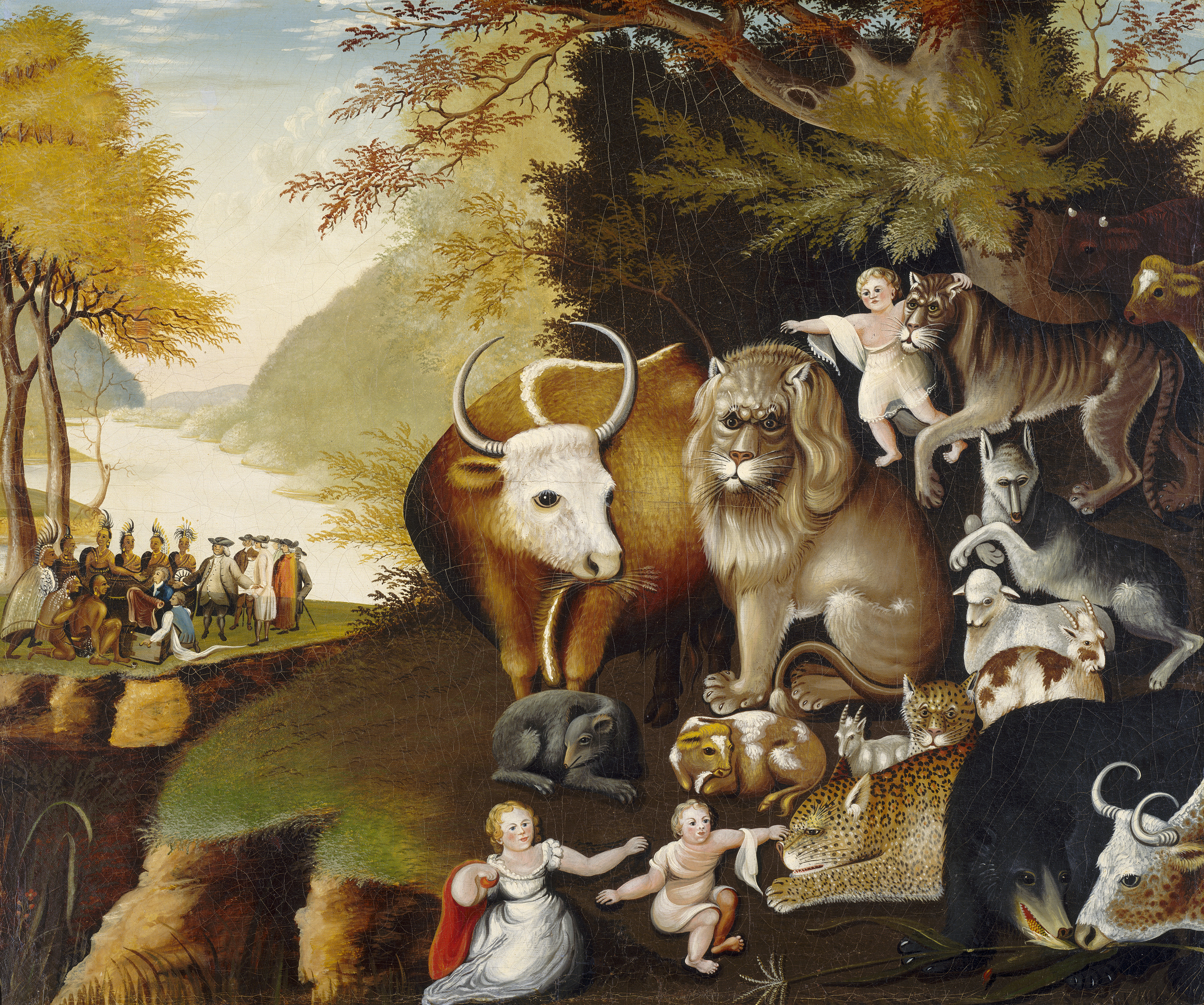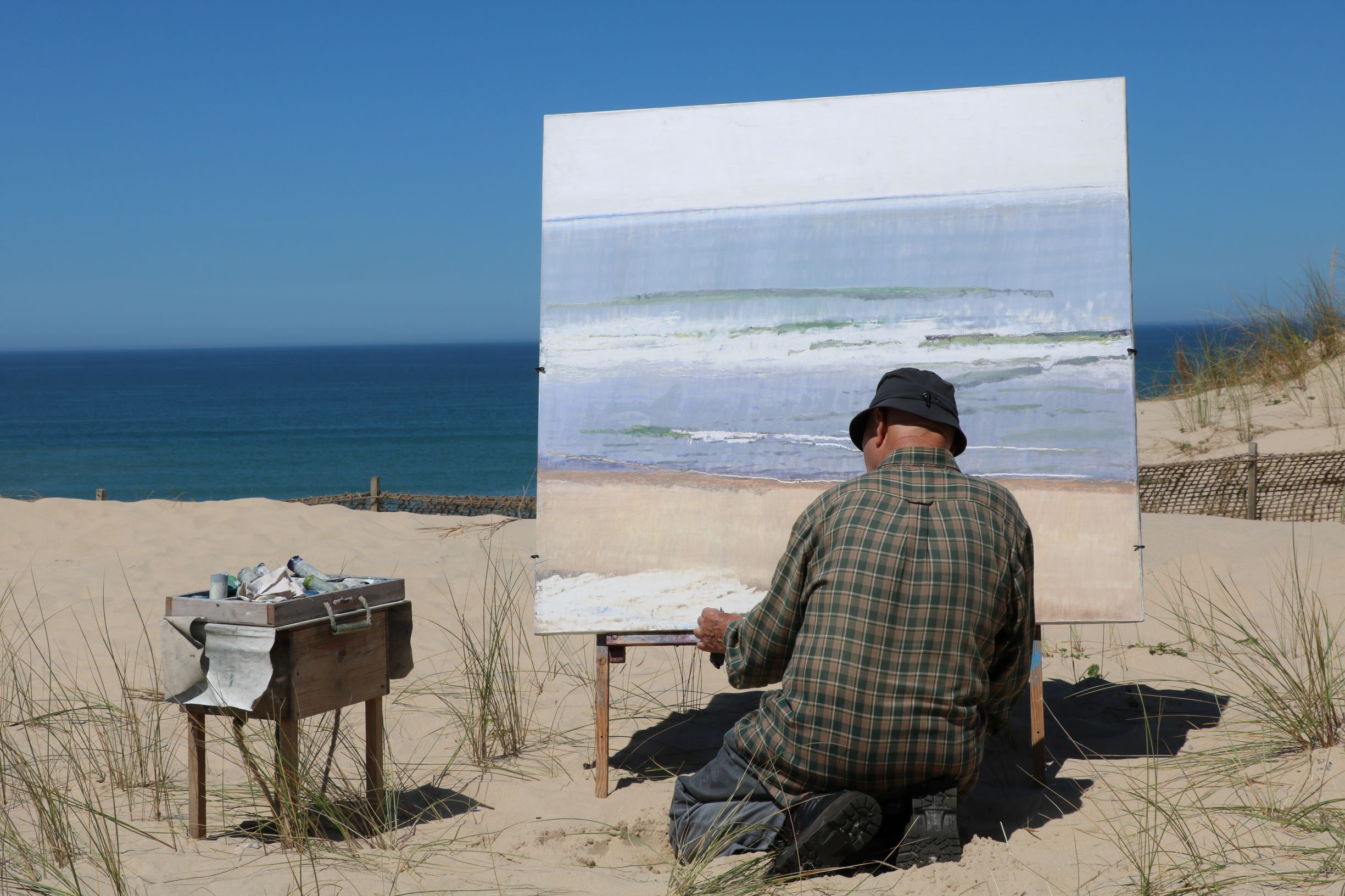|
James A. Michener Art Museum
The Michener Art Museum is a private, non-profit museum that is located in Doylestown, Bucks County, Pennsylvania. Founded in 1988, it was named for the Pulitzer Prize–winning writer James A. Michener, a Doylestown resident. Situated within the old stone walls of an historic nineteenth-century prison, it houses a collection of Bucks County visual arts, along with holdings of nineteenth- and twentieth-century American art, and is noted for its Pennsylvania Impressionism collection and an art colony centered in nearby New Hope during the early 20th century, as well as its changing exhibitions, ranging from international touring shows to regionally focused exhibitions. Facility The museum has of public space, including a landscaped courtyard, a glass-enclosed, state-of-the-art event pavilion, an outdoor sculpture garden and terrace built in the original prison yard, seminar and conference facilities, a museum shop and café, and the George Nakashima Reading Room. The Martin W ... [...More Info...] [...Related Items...] OR: [Wikipedia] [Google] [Baidu] |
Doylestown Station
Doylestown station is a SEPTA Regional Rail station in Doylestown, Pennsylvania. It is the last station along SEPTA's Lansdale/Doylestown Line. Located at the intersection of Bridge Street and Clinton Avenue, the station has a 169-space parking lot. It was originally built in 1871 by the Reading Railroad, as a much more elaborate Victorian structure than the present station. It had a decorative cupola over the ticket window and served as a Reading Railroad office at one point. The former freight house survives to this day. This station is wheelchair accessible. Description Doylestown station consists of a side platform along the tracks. There are five tracks at the station which allow for storage of trains. The station has a ticket office which is open on weekday mornings, as well as an ATM. In the past there was a pizza shop inside the station building. There is also a canopy-type roof over the platform where people board the trains to keep people dry on rainy days. There are 2 ... [...More Info...] [...Related Items...] OR: [Wikipedia] [Google] [Baidu] |
Doylestown Historic District
The Doylestown Historic District is a national historic district located in Doylestown, Bucks County, Pennsylvania. The district is composed of one thousand fifty-five contributing buildings in the central business district and surrounding residential areas of Doylestown, including a variety of residential, commercial, industrial, and institutional buildings and notable examples of Late Victorian and Federal style architecture. Notable buildings include the Intelligencer Building (1876), Lenape Hall (1874), Hart Bank (1850), County Jail (1885), Henry Lear House (1875), Charles E. Meyers House (1887), John Barclay House (1814), Meredith Shaw Mansion (c. 1812), and Shive's Hardware Store (c. 1833). Located in the district and separately listed are the Fountain House, James-Lorah House, Mercer Museum (1916), Pugh Dungan House, and Shaw Historic District. ''Note:'' This includes It was added to the National Register of Historic Places The National Register of Historic Pl ... [...More Info...] [...Related Items...] OR: [Wikipedia] [Google] [Baidu] |
George Nakashima
George Katsutoshi Nakashima ( ja, 中島勝寿 ''Nakashima Katsutoshi'', May 24, 1905 – June 15, 1990) was an American woodworker, architect, and furniture maker who was one of the leading innovators of 20th century furniture design and a father of the American craft movement. In 1983, he accepted the Order of the Sacred Treasure, an honor bestowed by the Emperor of Japan and the Japanese government.Moonan, Wendy. "Antiques: A Reverence For Wood And Nature", ''The New York Times'', November 7, 2003. Early life Nakashima was born in 1905 in Spokane, Washington, to Katsuharu and Suzu Nakashima. He enrolled in the University of Washington program in architecture, graduating with a Bachelor of Architecture (B.Arch) in 1929. In 1931, after earning a master's degree in architecture from M.I.T.,Designboom website; biography of George Nakashima 7 02; retvd 8 8 14 Nakashima sold his car and purchased a round-the-world tramp steamship ticket. He spent a year in France working odd jobs ... [...More Info...] [...Related Items...] OR: [Wikipedia] [Google] [Baidu] |
Edward Hicks
Edward Hicks (April 4, 1780 – August 23, 1849) was an American folk painter and distinguished religious minister of the Society of Friends (aka "Quakers"). He became a Quaker icon because of his paintings. Biography Early life Edward Hicks was born in his grandfather's mansion at Attleboro (now Langhorne), in Bucks County, Pennsylvania. His parents were Anglican. Isaac Hicks, his father, was a Loyalist who was left without any money after the British defeat in the Revolutionary War. After young Edward's mother died when he was eighteen months old, Matron Elizabeth Twining – a close friend of his mother's – raised him as one of her own at their farm, known as the Twining Farm. ''Note:'' This includes He apparently also resided at the David Leedom Farm. ''Note:'' This includes She also taught him the Quaker beliefs, which had a great effect on the rest of his life. At the age of thirteen Hicks began an apprenticeship to coach makers William and Hen ... [...More Info...] [...Related Items...] OR: [Wikipedia] [Google] [Baidu] |
Plein Air
''En plein air'' (; French for 'outdoors'), or ''plein air'' painting, is the act of painting outdoors. This method contrasts with studio painting or academic rules that might create a predetermined look. The theory of 'En plein air' painting is credited to Pierre-Henri de Valenciennes (1750–1819), first expounded in a treatise entitled ''Reflections and Advice to a Student on Painting, Particularly on Landscape'' (1800), where he developed the concept of landscape portraiture by which the artist paints directly onto canvas ''in situ'' within the landscape. It enabled the artist to better capture the changing details of weather and light. The invention of portable canvases and easels allowed the practice to develop, particularly in France, and in the early 1830s the Barbizon school of painting in natural light was highly influential. Amongst the most prominent features of this school were its tonal qualities, colour, loose brushwork, and softness of form. These were varian ... [...More Info...] [...Related Items...] OR: [Wikipedia] [Google] [Baidu] |
Impressionism
Impressionism was a 19th-century art movement characterized by relatively small, thin, yet visible brush strokes, open Composition (visual arts), composition, emphasis on accurate depiction of light in its changing qualities (often accentuating the effects of the passage of time), ordinary subject matter, unusual visual angles, and inclusion of movement as a crucial element of human perception and experience. Impressionism originated with a group of Paris-based artists whose independent exhibitions brought them to prominence during the 1870s and 1880s. The Impressionists faced harsh opposition from the conventional art community in France. The name of the style derives from the title of a Claude Monet work, ''Impression, soleil levant'' (''Impression, Sunrise''), which provoked the critic Louis Leroy to coin the term in a Satire, satirical review published in the Parisian newspaper ''Le Charivari''. The development of Impressionism in the visual arts was soon followed by analogo ... [...More Info...] [...Related Items...] OR: [Wikipedia] [Google] [Baidu] |
Walter E
Walter may refer to: People * Walter (name), both a surname and a given name * Little Walter, American blues harmonica player Marion Walter Jacobs (1930–1968) * Gunther (wrestler), Austrian professional wrestler and trainer Walter Hahn (born 1987), who previously wrestled as "Walter" * Walter, standard author abbreviation for Thomas Walter (botanist) ( – 1789) Companies * American Chocolate, later called Walter, an American automobile manufactured from 1902 to 1906 * Walter Energy, a metallurgical coal producer for the global steel industry * Walter Aircraft Engines, Czech manufacturer of aero-engines Films and television * ''Walter'' (1982 film), a British television drama film * Walter Vetrivel, a 1993 Tamil crime drama film * ''Walter'' (2014 film), a British television crime drama * ''Walter'' (2015 film), an American comedy-drama film * ''Walter'' (2020 film), an Indian crime drama film * ''W*A*L*T*E*R'', a 1984 pilot for a spin-off of the TV series ''M*A*S*H'' * ''W ... [...More Info...] [...Related Items...] OR: [Wikipedia] [Google] [Baidu] |
Daniel Garber
Daniel Garber (April 11, 1880 – July 5, 1958) was an American Impressionist landscape painter and member of the art colony at New Hope, Pennsylvania. He is best known today for his large impressionist scenes of the New Hope area, in which he often depicted the Delaware River. He also painted figurative interior works and excelled at etching. In addition to his painting career, Garber taught art at the Pennsylvania Academy of the Fine Arts for over forty years. Life Garber was born on April 11, 1880, in North Manchester, Indiana. He studied art at the Art Academy of Cincinnati, and at the Pennsylvania Academy of the Fine Arts in Philadelphia from 1899 to 1905. During this time Garber met and married his wife, Mary Franklin, who was also an art student. In the tradition of many American artists, Garber and his wife traveled to Europe to complete his art education. Returning to America in 1907, on the advice of artist William Langson Lathrop he settled at Cuttalossa ( Solebury Tow ... [...More Info...] [...Related Items...] OR: [Wikipedia] [Google] [Baidu] |
Edward Redfield
Edward Willis Redfield (December 18, 1869 – October 19, 1965) was an American Impressionist landscape painter and member of the art colony at New Hope, Pennsylvania. He is best known today for his impressionist scenes of the New Hope area, often depicting the snow-covered countryside. He also spent his summers on Boothbay Harbor, Maine, where he interpreted the local coastline. He frequently painted Maine's Monhegan Island. Biography Redfield was born in 1869 in Bridgeville, Delaware. He showed artistic talent at an early age, and from 1887 to 1889 studied painting at the Pennsylvania Academy of the Fine Arts in Philadelphia. His teachers at the Academy included Thomas Anshutz, James Kelly and Thomas Hovenden. Anshutz maintained the teaching methods of Thomas Eakins, which focused on an intense study of the nude as well as on human anatomy. While at the Academy, Redfield met Robert Henri, who was later to become an important American painter and teacher, and the two becam ... [...More Info...] [...Related Items...] OR: [Wikipedia] [Google] [Baidu] |
Fern Coppedge
Fern Isabel Coppedge (July 28, 1883 – April 21, 1951) was an American impressionist painter. Life Born in the small town of Cerro Gordo near Decatur, Illinois to John L. Kuns and Maria Dilling Kuns, Fern Coppedge spent much of her life in Pennsylvania where she was associated with the New Hope School of American Impressionism, the Fellowship of the Pennsylvania Academy of Fine Arts, and the Philadelphia Art Alliance, and what became known as the Pennsylvania Impressionism movement. Fern attended the Art Institute of Chicago, the Art Students League of New York, and the Pennsylvania Academy of the Fine Arts. During her artistic career she received several awards including the Shillard Medal in Philadelphia, a Gold Medal from the Exposition of Women’s Achievements, another Gold Medal from the Plastics Club of Philadelphia, and the Kansas City H.O. Dean Prize for Landscape. She was a member of several prominent art organizations including the Philadelphia Art Alliance, the Art ... [...More Info...] [...Related Items...] OR: [Wikipedia] [Google] [Baidu] |
Nate Dunn
Nathan Dunn (1896–1983) was an American painter born July 4, 1896 in Pittsburgh, Pennsylvania. Dunn's work is associated with the Pennsylvania Impressionists. He was an impressionist, abstract, and modernist artist and was named a Fellow of the Royal Society of Arts. His paintings are held in private and museum collections. Life Nathan "Nate" Dunn was born July 4, 1896 in Pittsburgh, Pennsylvania to Polish-Russian parents (Israel and Edith "Ida" Dunn). He moved to Sharon, Pennsylvania in the Shenango Valley in 1926 and remained there until his death."The Herald, Sharon, PA, August 25, 1983" Dunn was an art teacher at the Julia F. Girls' Buhl School in Sharon for over twenty-five years. He studied at the Carnegie Institute of Technology (now Carnegie Mellon University). Dunn's paintings were primarily abstract, impressionist, and still lifes and he had various one-man art exhibits. Dunn was married to Beatrice M. Dunn and died on November 17, 1983. Career Dunn studied ... [...More Info...] [...Related Items...] OR: [Wikipedia] [Google] [Baidu] |
George Sotter
George W. Sotter (1879 – 1953) was an American painter best known for Impressionist-style works. He was born and raised in Pittsburgh, Pennsylvania but eventually made his name in . He is also known for his work in stained glass, some of which are still installed in numerous churches. In the August 5, 2006 episode of '''' on |





